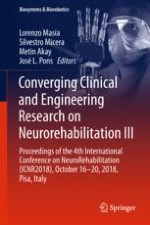2019 | OriginalPaper | Buchkapitel
Classification of Healthy Subjects and Alzheimer’s Disease Patients with Dementia from Cortical Sources of Resting State EEG Rhythms: Comparing Different Approaches
verfasst von : C. Del Percio, V. Bevilacqua, A. Brunetti, R. Lizio, A. Soricelli, R. Ferri, F. Nobili, L. Gesualdo, G. Logroscino, M. De Tommaso, A. I. Triggiani, M. Blūma, G. B. Frisoni, C. Babiloni
Erschienen in: Converging Clinical and Engineering Research on Neurorehabilitation III
Aktivieren Sie unsere intelligente Suche, um passende Fachinhalte oder Patente zu finden.
Wählen Sie Textabschnitte aus um mit Künstlicher Intelligenz passenden Patente zu finden. powered by
Markieren Sie Textabschnitte, um KI-gestützt weitere passende Inhalte zu finden. powered by
